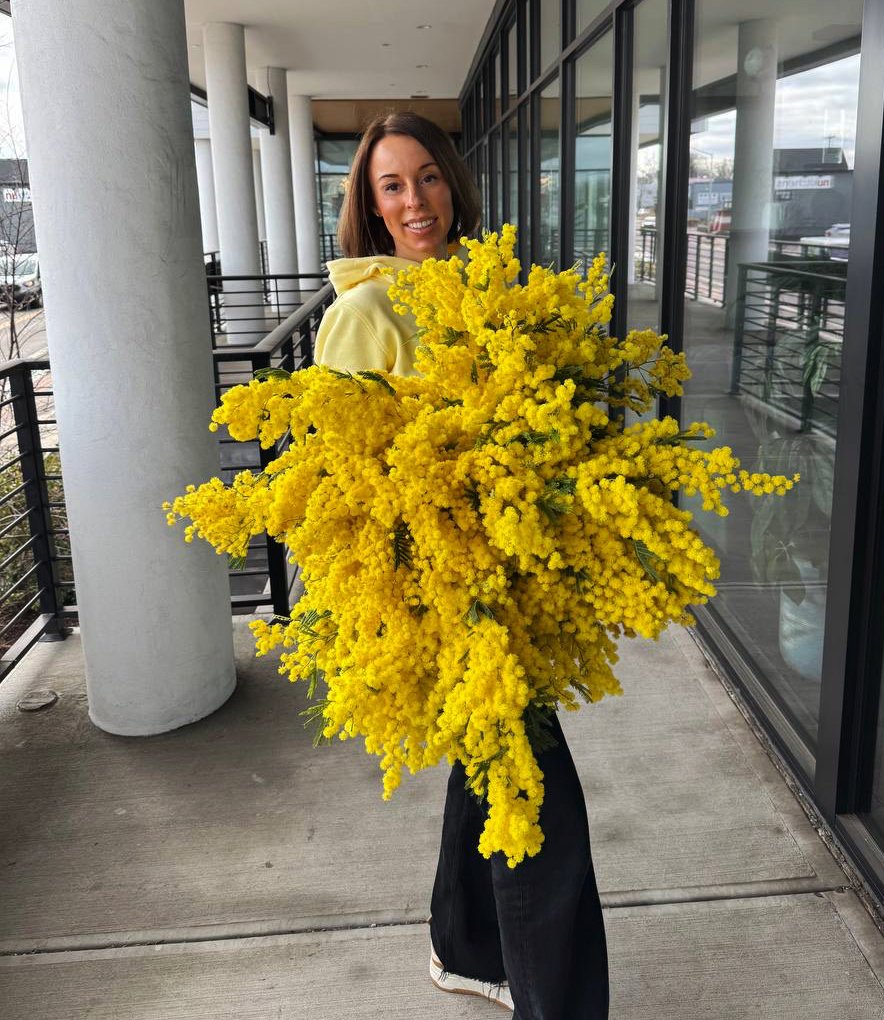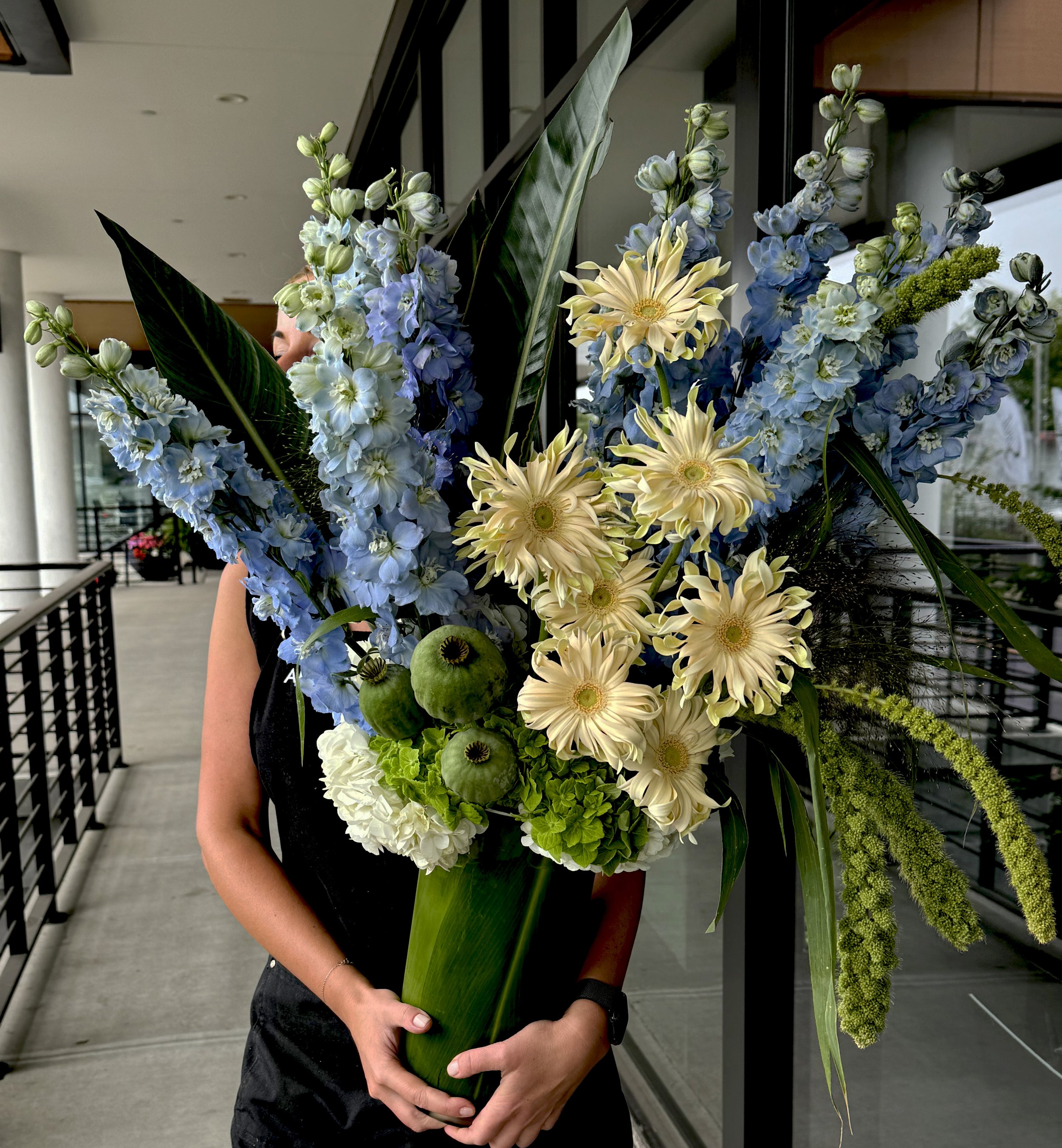DIY Flower Arranging Tips for Beginners
Step-by-Step Guide to Creating Your First Arrangement
Step 1 – Start with a Clean, Prepped Vase
The foundation of any great flower arrangement is a clean container. Before adding your blooms, wash your vase thoroughly with warm water and a bit of bleach or vinegar to eliminate any lingering bacteria that could shorten the life of your flowers. Fill it with fresh, cool water and add flower food if you have it—this helps nourish the blooms and prevent bacterial growth.
Choosing the right vase is also important. For beginners, stick with medium-sized vases with a wide mouth. Mason jars, ceramic pots, or classic glass vases all work beautifully. Avoid containers that are too tall or narrow—they make arranging more difficult.
Step 2 – Begin with Greenery as Your Base
Start your arrangement by placing greenery around the edges and center of the vase. Greenery acts as a structural base that holds your flowers in place. Great beginner options include eucalyptus, leather leaf fern, or ruscus. Trim the stems at an angle to help them absorb more water and remove any leaves below the waterline to prevent rot.
Think of greenery as the frame for your floral artwork. It adds volume, contrast, and texture while guiding the shape of your bouquet. Let some leaves drape slightly over the edge for a relaxed, natural look.
Step 3 – Add Focal Flowers Next
Now it’s time for the stars of your bouquet—the focal flowers. These are usually the largest and most eye-catching blooms. Roses, sunflowers, hydrangeas, or peonies are great for this. Place them in a triangle pattern within the greenery base to create balance and movement.
Don’t worry about symmetry—odd numbers and varying heights look more natural. As you place each flower, step back and observe the flow of the arrangement. It should feel loose and organic, not overly rigid or perfect.
Step 4 – Fill in the Gaps with Secondary Flowers
Secondary or “filler” flowers add softness and depth. Think daisies, carnations, snapdragons, or alstroemeria. These complement the focal flowers and help tie the arrangement together.
Use them to fill any obvious holes and to smooth out transitions between focal flowers and greenery. Vary the angles and lengths slightly to create a more dynamic look. Remember to continue trimming the stems as you go and remove any leaves that would sit below the waterline.
Step 5 – Add Delicate Accents for Final Touches
Accent flowers and tiny details can take your bouquet from basic to breathtaking. Baby’s breath, statice, wax flower, or billy balls add pops of color and texture. These small elements are great for filling in tight spots and adding visual interest.
Add a few stems here and there, then adjust everything slightly with your hands. Don’t be afraid to reposition—this is art, not science. If it feels good to you, it is good.
Step 6 – Finish with Flair
Once your arrangement is full and balanced, give it a final once-over. Turn it slowly and view from different angles. You might spot a gap or notice that one flower sits too low or too high. Adjust as needed until you’re satisfied.
Lastly, wipe off any water drips on the vase, place it in a cool spot away from direct sunlight, and enjoy your creation. You’ve just made a floral arrangement with your own hands—how satisfying is that?
Tips for Styling and Displaying Your Arrangement
Matching the Mood of Your Space
Your arrangement should feel like it belongs in the space it’s displayed. A wildflower mix looks perfect on a rustic wooden table, while a classic rose arrangement feels at home in a chic living room or formal dining space. Think about the overall vibe—casual, romantic, dramatic, minimalist—and let that guide your flower and container choices.
In the U.S., more people are styling small arrangements for desks, bathrooms, and kitchen counters. A mini bouquet in a teacup or mason jar can make everyday corners feel special and intentional.
Using Props and Layers
Add layers around your arrangement to elevate its presence. A simple linen cloth beneath the vase, a stack of books, or a candle nearby can enhance the visual appeal and make your bouquet feel like part of a styled moment.
If you're into photography or sharing your work on social media, use natural lighting and minimal clutter around the flowers to make your arrangement stand out.
Common Mistakes to Avoid as a Beginner
Overcrowding the Vase
It’s easy to get excited and try to cram every flower into one arrangement, but overcrowding can actually shorten the lifespan of your flowers and make the design feel chaotic. Give each stem room to breathe and shine.
Ignoring Stem Lengths
One of the most overlooked parts of arranging is trimming stems to different lengths. Flat, uniform heights make the bouquet look stiff. Play with high and low placements to create movement and visual interest.
Forgetting Water Maintenance
Fresh flowers need care to last. Change the water every two days, re-trim the stems every few days, and keep your arrangement out of direct sun and heat. A little maintenance goes a long way.
Conclusion
Creating your own flower arrangement isn’t just about making something pretty—it’s about slowing down, tuning into your senses, and bringing a little nature into your life. With the right tools, a few favorite blooms, and a bit of practice, anyone in the U.S. (or anywhere!) can create stunning DIY floral designs that brighten your space and lift your mood.

